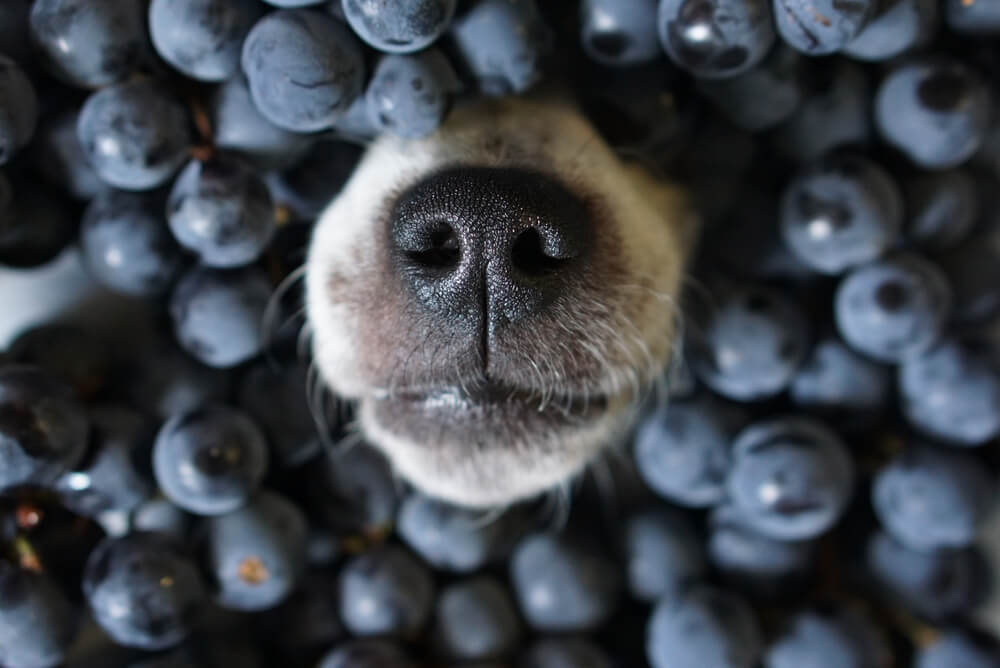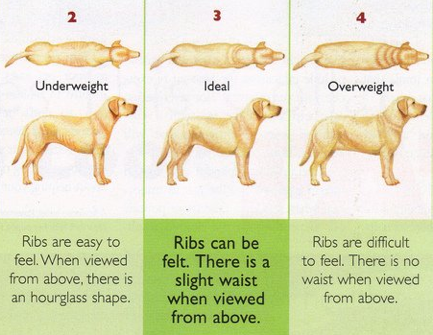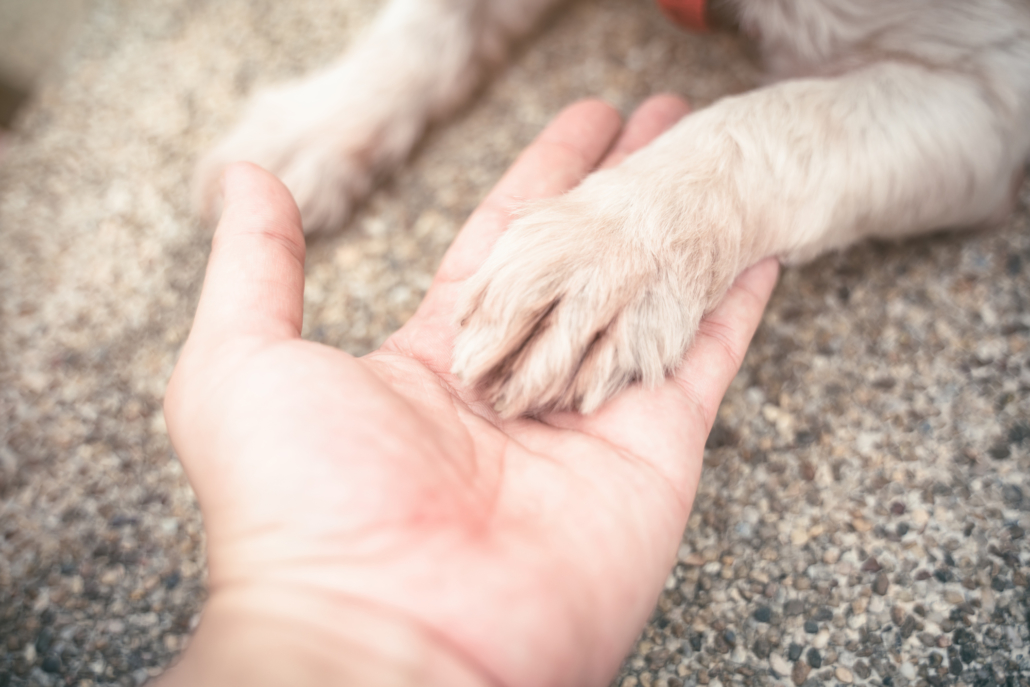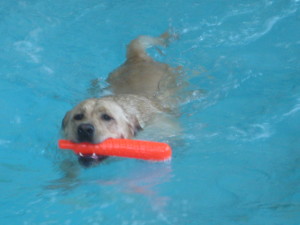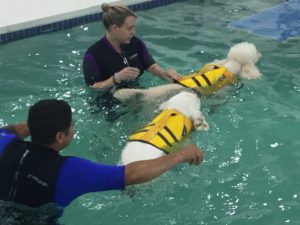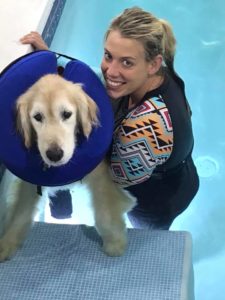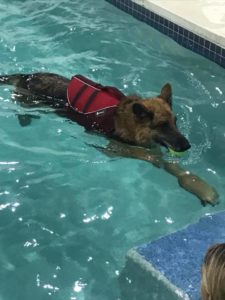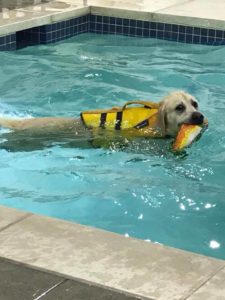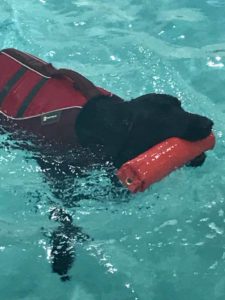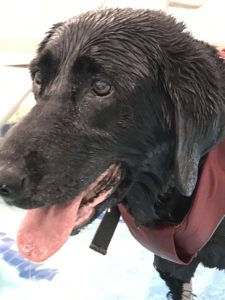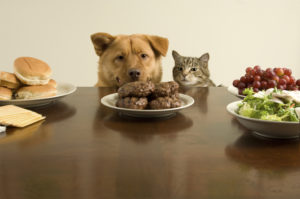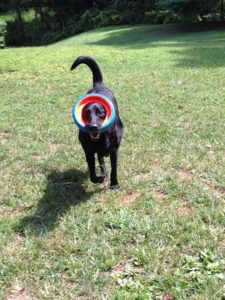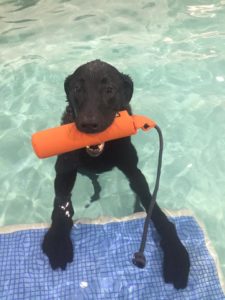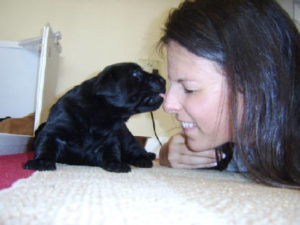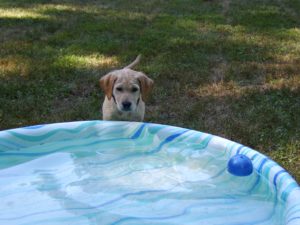Don’t get me wrong on this title. Good quality food is LOVE. But do not confuse love and food!
I have labs. They would eat 24/7, okay maybe not Zeke who cares more about playing than eating, but my other two? Seriously? They would! And yes, I am sure they would love pizza and ice creams, but they are not going to get those! Because it’s not HEALTHY!
Every 52 days your pup celebrate a year in two-legged year. Make him/her have many of those, and you can start with his diet!
At the beginning of the Pandemic and the shutdown, I thought that we were only going to see fit dogs from now on. There were even cartoons showing dogs being fed up with going on walks ten times a day! I was totally wrong!
Most dogs gained weight. I am not a psychologist so what’s up with the feeding? Not sure I totally get it. These days, I see people feeding geese and ducks bread when you have signs everywhere saying to not feed them, especially bread which is not something they should eat. Do people care? Nope! Because it’s not about the ducks or the geese, it’s about the human!
We now go feed the sharks! Not sure I get that one either.
Food is not love! Love is taking your pup on a walk, it’s playing fetch with him/her, it’s spending time with your pup and then yes, giving your dog good food. Give them the best food you can afford.
CALORIES
You should ask your veterinarian how many calories your dog should have on a daily basis. For instance, my Sophie, 70lbs, who is 12.5 only need 870 calories a day vs my four year old Zeke, 70lbs, who needs 1,150 calories a day.
It’s not really a matter of how many cups. Food calories vary from one brand to another. You just have to check the calories on the bag. Ask your vet to do the math for you, and you can go to this site which explains how to do it: Basic Calorie Calculator | Veterinary Medical Center (osu.edu)
Breaking news: treats have calories too! See below for all the healthy treats that you can give to your pup!
You have your pup’s life in your hands. They don’t know better. They trust you whatever you will be giving them. Choose the healthy way for their sake.
LET’S TALK ABOUT FOOD!
I am sure when you buy products for yourself, you look at the ingredients. Do the same for your pup. Corn should not be the first ingredient! Dogs are not deer! Meat should be the first one on the list. And yes, the variety of dog food you can find on the market can be overwhelming. The site dogfoodadvisor.com is pretty good and thorough. If you sign up, you also get alerts if there is any recall.
Grain free food: I used to give that one because it did make sense, right? And I did not know. I did not know that grain free food could cause cardiomyopathy in large breed dogs. Sophie, my Sophie was diagnosed with cardiomyopathy four and half years ago and is checked out by a cardiologist every six months. Her heart is stable and has been since the first appointment, and I am a lucky one. I asked Sophie’s cardiologist why for the grain free? His answer was that it’s not the grain free itself, it’s some ingredients in it which seem to be causing the issue: peas, chickpeas, potatoes, sweet potatoes. So, we stay away from all of these.
I am working on not blaming myself for the stuff I did not know until I knew it, and it’s not an easy task! You just have to get the best food you can afford: kibbles, cans, raw or the cooked meals like Farmer’s or Nomnomnow.
Kibbles: a few tips.
Buy small bags. You have to realize that the second you open the bag, oxidation happens. It occurs when oxygen gets to the fats on the surface of kibble. It causes the fat cells to degrade, and your dog food starts to lose lots of its nutrients. It can even become toxic. Steve Brown, a dog food nutrition author, and dog food developer believes that kibbles last just seven days, maybe fourteen tops.
And then storing your food: I have an airtight plastic container, and that’s where I keep the bag. Do not dump the food into the container. Keep your food in the bag. Many of them have Velcro. Get the air out, and close your bag. One of the other reasons to keep the bag is that if your pet food has a recall, you will know right away if your bag is involved in that specific recall.
I, personally, got rid of the kibbles. Having had 11 labs in the last 20 years, 10 died of cancer, and the only thing I was not in control of was the food. There are no regulations in this country for pet food. Don’t get me wrong a vast majority of dogs will eat kibbles and have long lives. It just did not happen with mine.
RAISING A PUPPY IS LIKE RAISING A CHILD
Child or dog, they don’t know what’s good or not for them. You are the one in CHARGE. They are not.
TOXIC FOOD:
Before I go further, here is a list of what you should NEVER give to your pup, like EVER.
Xylitol is now causing more deaths in dogs than chocolate. It’s called various names just to be a bit more confusing among them birch sugar, Xylitol is found in candies, peanut butter, face cream, baby wipes and so many other products. Read, read, read the labels.
Chocolate.
Grapes and raisins,
Apple seeds,
Avocado,
Alcohol obviously,
Caffeine products,
Macadamia nuts
Yeast dough
VEGGIES AND FRUITS
This is a fun time to make them discover fruits or veggies! It is as fun to see your pup discover a berry or a piece of watermelon than your baby tasting new food. My own Zeke is a drama king regarding new stuff. The first raspberry he got, he was not sure if that thing was alive or not, it took him a few minutes to decide it was safe to eat.
- Apples. These are a great source of Vitamins A & C, and packed full of fiber to keep your dog’s digestive system working effectively. Just be sure to remove the core and seeds before feeding an apple to your pet.
- Bananas. Rich in potassium, vitamins, and copper, bananas are exceptionally sweet, and they’re also safe for your furbaby to eat. Due to their high sugar content, bananas should only be given occasionally and regarded firmly as a treat.
- Blueberries. Blueberries are full of antioxidants and fiber, which can help defend your pet from cancer.
- Broccoli. This dark green vegetable is safe for your pet to eat, but only in very small quantities, as broccoli is fibrous and can lead to diarrhea.
- Brussel sprouts. Beware – the gassy effects of these vegetables are just as prevalent in dogs as they are in humans!
- Cantaloupe. Feed this delicious melon sparingly, as it is high in natural sugar.
- Carrots. Carrots are high in vitamins and fiber, and their fibrous nature can brush away tartar, making them good for your dog’s teeth! The only issue with carrots for my crew: they only eat the organic ones. If I make a mistake and take the regular ones, the carrots will stay lying on the floor and they will look at me like “You failed us! How could you do that to us?”
- Celery. Similar to carrots, celery is another low-calorie vegetable that will naturally scrub your dog’s teeth.
- Cucumbers. Cucumbers are safe another safe low-calorie snack for dogs. However, don’t feed your pup too much, since it can cause an upset stomach.
- Green beans. Fresh green beans are chock full of iron and vitamins, making them a healthy option for your dog. Remember to only feed your pup fresh green beans, as canned ones usually have added salt.
- Mango. Don’t forget to remove the stone before feeding as it contains a small amount of toxic cyanide and could potentially cause your dog to choke. Like bananas, mangoes can be fed as a sweet treat.
- Oranges. These should be peeled, and all seeds removed before feeding to your canine pal to avoid choking hazards.
- Peaches. Again, cut around the pit and remove it before offering it to your furbaby.
- Pears. Don’t forget to remove the pit and stones from pears too!
A FEW IDEAS FOR HEALTHY SUMMER TREATS FOR THE PUPS:
- a frozen carrot (most dogs love carrots, freeze it for a few hours)
- Frozen baby food like Gerber pumpkin
- Frozen chicken broth
- Frozen Kong with peanut butter
- I dehydrate a ton of stuff for my crew: strawberries, carrots, green beans, chicken, salmon (the best purchase I ever made was a dehydrator!)
AND NOW LET’S TALK ABOUT HUMAN FOOD….
I never fed my dogs from the table for one single reason: I had seven Labrador retrievers, yes 7 at one time. So, you can forget about giving them a piece of bread or a piece of fish or whatever. It never happened; I did not raise beggars. Don’t get me wrong here. I did not raise beggars, but I had a thief, and he had no excuse. He never missed a meal in his whole life. I know this for a fact since he was born at home, but he was the thief of all thieves, the one who managed to open anything and everything if there was anything eatable there. It took me over six months after his death to not stop outside when I was leaving home and wondered if I had left anything that Jackson would be able to get.
This is just a funny video of Jackson. I came into the house when he had just opened the fridge (I had to put a lock on the darn fridge!) and was checking what he was going to get. He absolutely did not care that I had just arrived. That was my boy.
He was an exception in many ways, but if you give your dog food from the table, from the counter, from wherever you are, he will believe that he can surf all those places since he/she got some from there.
And then the people food. Human ice creams or pizzas are not good for your pup. Years ago, I met a beautiful, sweet lab who was obese, and I told his Mom that if she worked with us with the food, then with the regular swimming he would lose weight. Her answer was “XXXX loves pizza. He gets pizza every day, and I will not change that.” He died some time ago. He was not able to stand up anymore. This is dog abuse in my book
Every dog parent knows that dogs are the most amazing creatures, and they have such a short life. Don’t shorten it by making them fat. It’s just not fair. When we start to feed our pets from our plate, counter, anywhere not in their own food bowl, or food that is anything other than their normal dog food, we start to introduce bad habits that can be difficult to break. Not only are we setting up our pets to behave badly, but we are also introducing the possibility of eating toxic foods, as well as an increase in daily calories.
OBSESITY IN DOGS
The most recent statistics classify the majority of dogs in the U.S.—56%—as overweight or obese. While that makes obesity a major health crisis for dogs, it’s a problem that’s often overlooked, as many pet owners may not even realize their pets are overweight.
A lifetime study on Labrador retrievers found that slim dogs lived an average of two more years than the ones who were overweight.
Too much weight causes so many health issues:
- Joint problems
- Back problems
- Some types of cancers
- Heart issues.
It’s never too late to get your dog to shed a few pounds. It will make a huge difference for the joints and for quality of life. Check out that chart to figure out if your pup needs to work on his body figure!
Let’s just try to keep our fur babies healthy. There is nothing I want more than having my dogs grow old by my side. Isn’t that we all want?

